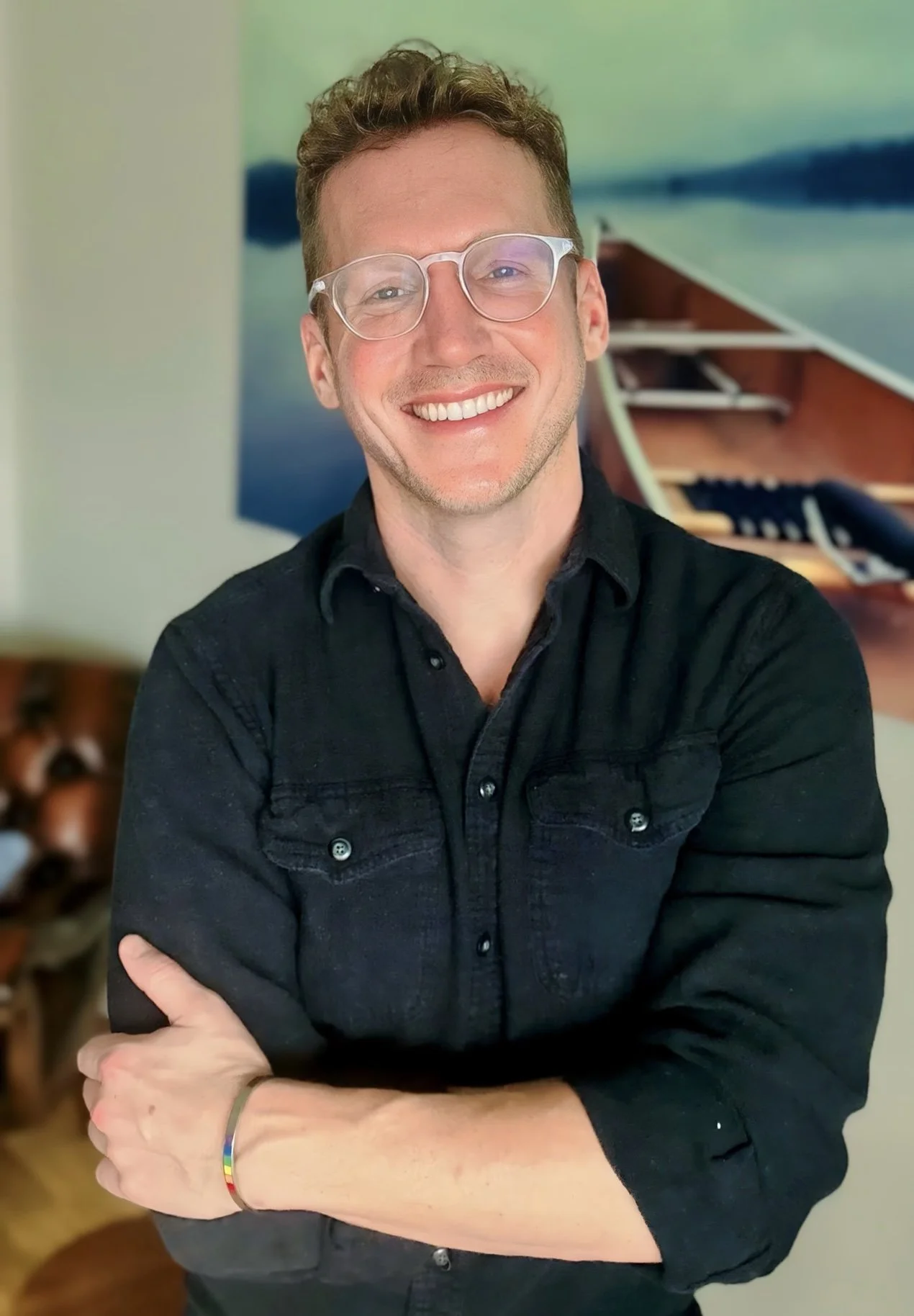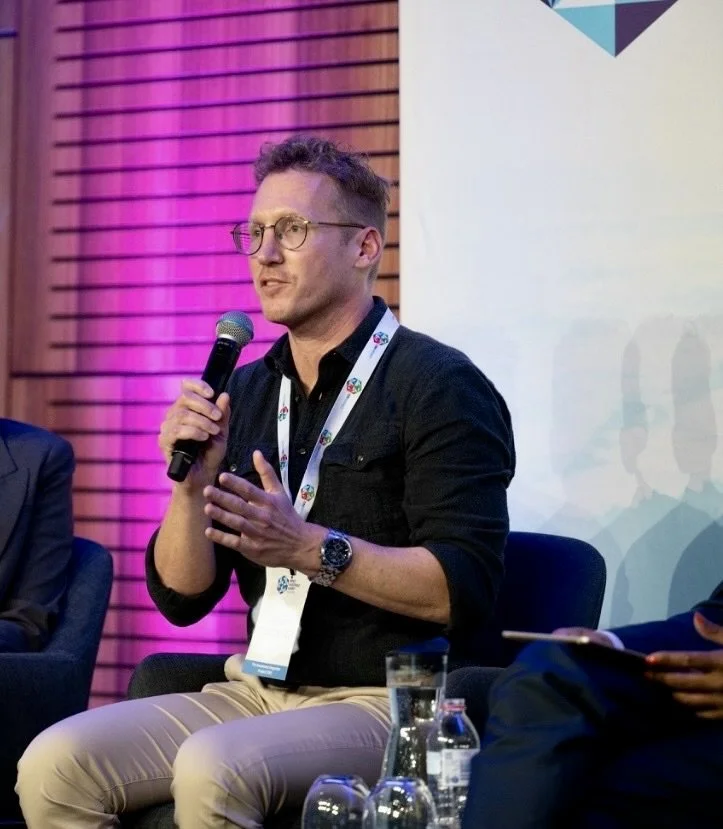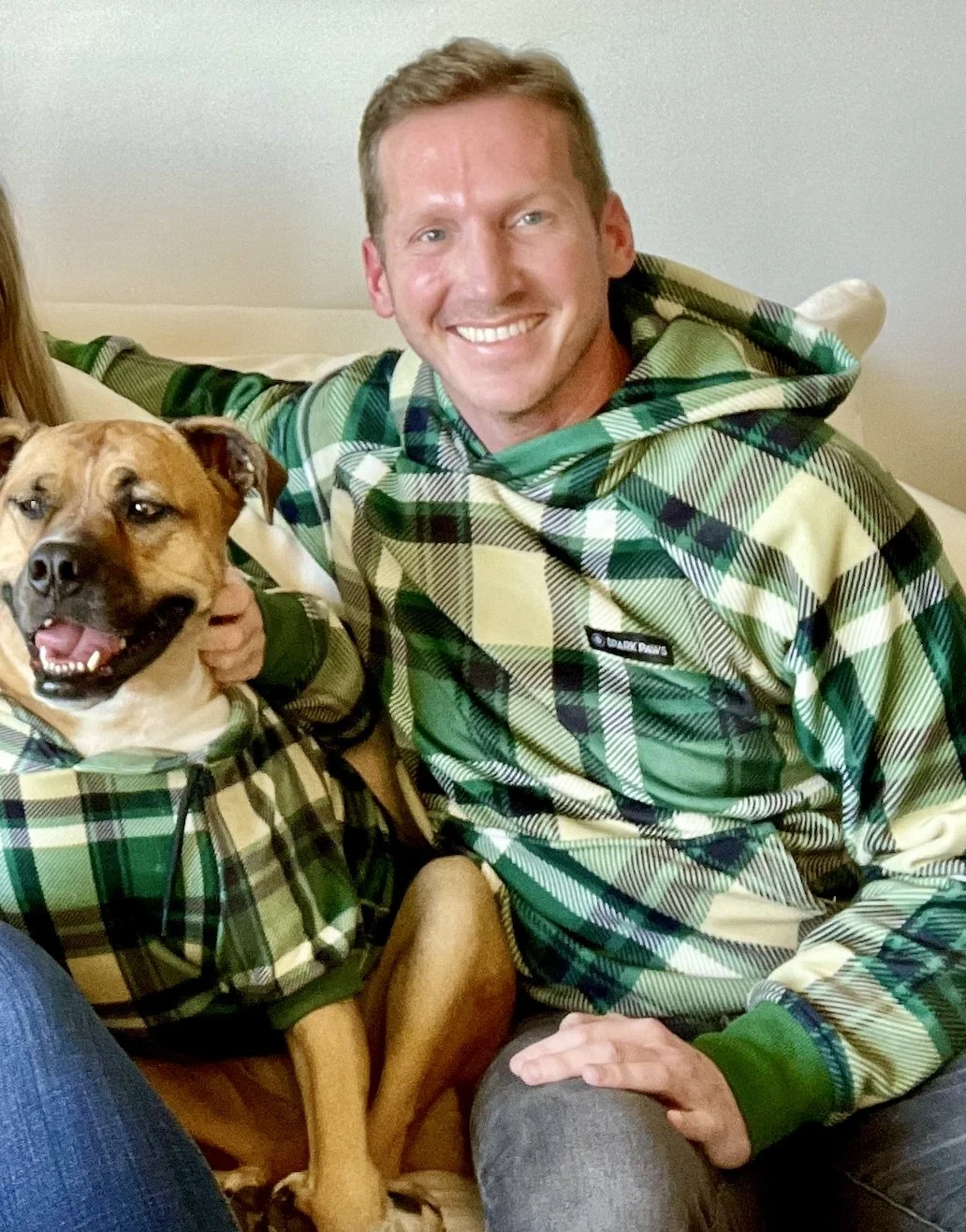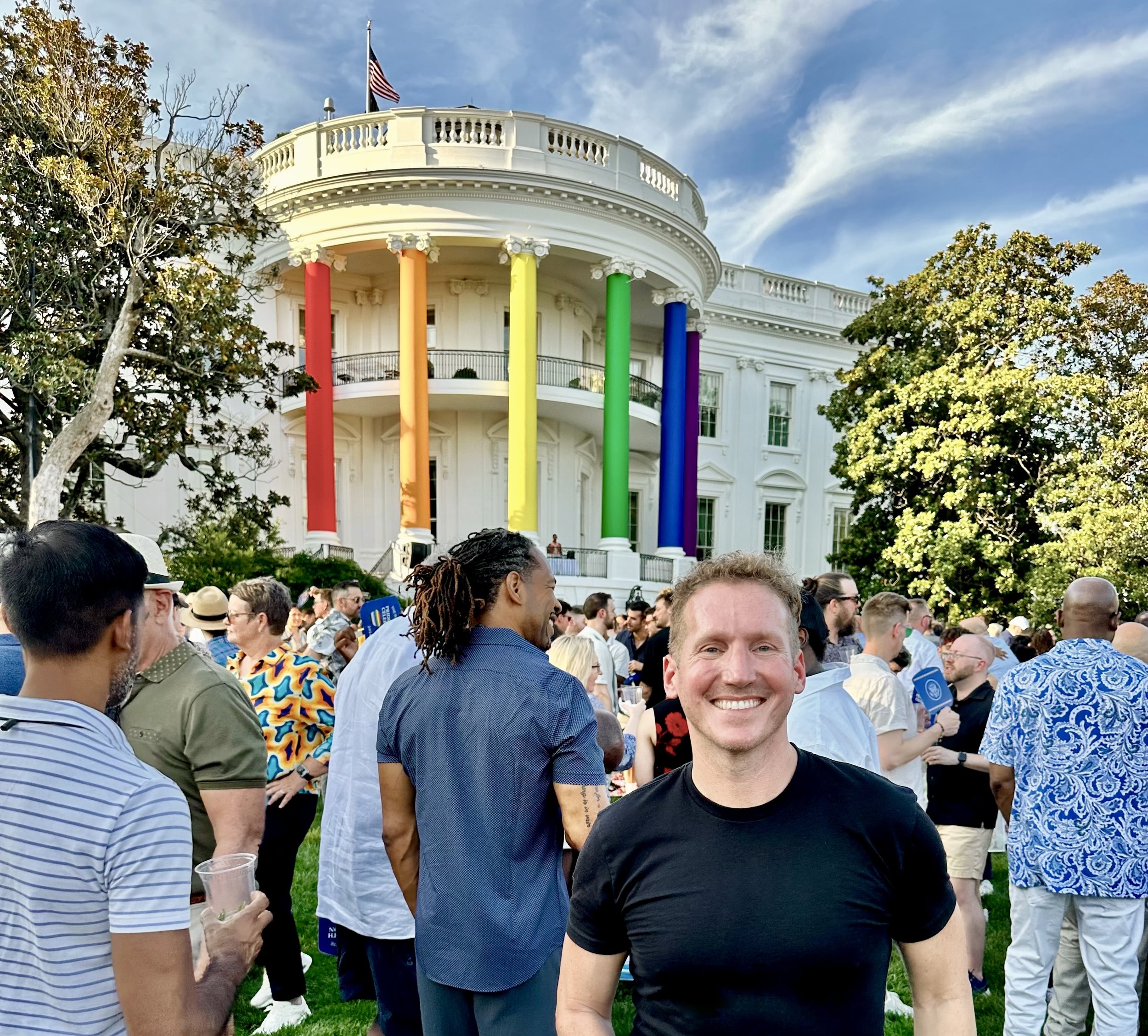William Burckart: Investing in an Inclusive Future
Photo courtesy of William Burckart
William “Bill” Burckart is a pioneering figure in impact investing, with nearly 20 years of experience driving social and environmental change through the deployment of private capital. He co-founded The Investment Integration Project (TIIP), where he worked with major organizations to develop investment strategies that address systemic risks. Bill also co-founded Colorful Capital, which supports LGBTQIA+ entrepreneurs. In addition to his investment work, he serves as an adjunct professor at Columbia University.
Could you please introduce yourself?
My name is William Burckart. I am the co-founder of Colorful Capital, a venture fund that invested in LGBTQ+ led ventures. I'm also the co-founder and CEO of the Investment Integration Project, which is celebrating its 10-year anniversary this year. We've been working over these years to help conceptualize, lay the evidence base, and ultimately equip investors and the broader financial system to better manage and help address big systemic issues like climate change, income inequality, and LGBTQIA+ inequity. In my free time, I am an adjunct professor at Columbia University teaching about this whole idea of taking a systems lens to investing. My hobbies include amateur kite boarding and I'm learning Spanish–terribly but making progress.
Can you tell us a little bit about your career path and what led you to founding Colorful Capital as well as The Investment Integration Project?
My upbringing was in an upper middle class family that had a lot of entrepreneurs that were looking at the opportunities in terms of leveraging the 3 sectors, but for reasons that were not necessarily focused on equality or environmental resiliency. I remember going to town council meetings because my dad was the vice mayor of our town. I would be sitting behind the dais, and no one could see me, but I was sitting there just absorbing. Citizens were getting up. They were voicing really rational, logical complaints. But I knew that the town council had already made up its mind on what they were going to do, and it felt almost performative. I remember, even at a young age, thinking ‘if we could leverage the 3 sectors in a more meaningful way, we could drive towards resiliency and equality’. That cascaded throughout my entire career. I initially thought I was gonna be training myself to become a diplomat.
But upon graduating high school, and in the middle of my freshman year of college, 9/11 happened. That profoundly impacted how I thought about the world and what I wanted to dedicate my career and purpose to. That ended up pivoting my focus. I transferred to George Washington University and studied international affairs for my undergrad. I was also focused on economics and nonprofit management to get that broader cut of perspectives. I was working for members of Congress in the US and members of Parliament in the UK, trying to get as many exposure points as possible. While being a researcher for a couple members of Parliament, I realized I couldn’t go back to the US until I had lived and immersed myself in a country that I didn't know the culture or the language. So, I applied for a freelance journalist position at the only business journal I could find in Shanghai that was published in both English and Mandarin.
It was at that point I got turned on to venture philanthropy. The venture capitalists at the time were in their 30s and had made hundreds of millions of dollars in a way that they then wanted to philanthropize. This predated impact investing, which was coined right around 2007 when I was finishing up graduate school. And so, through a host of different experiences, my career started to evolve into always being focused on pushing the boundaries of what private capital mixed with public purpose could actually achieve. That ultimately led me to, a decade ago, helping to co-found The Investment Integration Project (or TIIP for short), which has been working with a range of institutional investors all around the world, helping them move away from a portfolio-only perspective, which is where most impact and sustainable investors sit. The work has been not only about helping individual investors put this into practice but also about how we can start to change the structures of the financial system so that more investors can do this kind of work more effectively.
Thus, when Megan Kashner and I got together to co-found Colorful Capital, and were later joined by Soltan Bryce, we wanted to help make this focus more prominent and more actionable to the impact and sustainable investment field so that we could ultimately start to unlock more capital to our community to solve some of the inequities within it.
In establishing Colorful Capital, what systemic challenges did you aim to address for LGBTQIA+ entrepreneurs, and how have you seen the community respond so far?
When we started Colorful Capital, we didn't necessarily start out to become a venture capital firm. We started with just this idea that the LGBTQIA+ community does not get the same benefits, the same access, and the same support as the non-LGBTQIA+ community. We know statistics on the anemic percentage of venture capital that ultimately goes to LGBTQIA+ led ventures. It's less than a percentage point. Much of that flows to men that are white and identify as gay, and women that are also white and identify as lesbians. But for the segments of the community that have additional intersectional dimensions to their identity, including those related to race and gender, they are severely hampered in terms of their opportunity to realize their innovations and ambitions.
We did a lot of research to determine that there really is inequality and that that inequality is felt differently within different segments of the community. Then, we backed that up with interviews with entrepreneurs that reflected many of the segments of the LGBTQIA+ community, and tried to understand their unique experiences. What we were finding was not really surprising to any of us that are in the community: it's things like if you're an entrepreneur that's a member of the community and you are raising capital outside of New York, San Francisco, to some extent Chicago, and a little bit of Boston, your opportunity to get support, to actually receive the kind of investor attention and capital needed, is severely limited. So, there's an opportunity to make investments in companies that reflect a broader or more complex ecosystem that includes rural areas and areas that a lot of investors look over. We also heard countless stories of women founders being told to bring a male colleague or partner to fundraising meetings just to be taken seriously. It’s shocking, but not uncommon. A story that really stood out involved a founder that is a woman that is also transgender. She was in a due diligence meeting with a firm focused on gender-lens investing—a space dedicated to fostering greater gender equity in business. Halfway through the meeting, someone leaned in and asked her, "Are you a real woman?" Imagine being questioned like that in such a high stakes professional setting.
One particularly important gap we noticed was in access to angel investment. For context, angel investments often come from friends and family—it’s that initial funding many entrepreneurs rely on to get started. But for members of our community, especially those who’ve been ostracized or even kicked out of their homes due to their intersectional identity, that kind of financial support simply isn’t an option. This lack of access further perpetuates the inequities they face in building their businesses. It’s situations like these—being denied credit or other structural barriers—that systematically diminish opportunities for our community. Moreover, we identified a critical gap in the pre-seed and seed funding stages. While there was some capital available at the angel stage and more accessible funding at later stages—like Series A, once initial traction in the market was proven—there was a noticeable void in the earlier stages. This is the critical point where entrepreneurs transition from relying on friends and family to building something truly investable. Unfortunately, there simply weren’t many capital providers in this space.
We also saw funds claiming to have a broad focus, covering 20 thematic areas, LGBTQIA+ being one of them. But when we asked whether they were actively investing in LGBTQIA+ ventures—whether that meant founders, management teams, or companies offering products and services for the community—the responses were underwhelming. Many would say, “Oh, we don’t track that data. It’s not appropriate to ask. We wouldn’t even know how to collect that information.” This lack of tracking, coupled with the fact that most investment management teams didn’t reflect the community—they were overwhelmingly made up of men that are also white and straight—revealed a significant disconnect.
Once we put all these pieces together, we saw the unique contribution that Colorful Capital could make. When we entered this space just three years ago, there were only a few players—groups like Chasing Rainbows and Pride Fund, and now newer entrants like identity.vc in Europe and Misfit Ventures in Canada. It was clear that the market wasn’t robust, and that’s why we formalized Colorful Capital as a venture capital firm. We knew there was a critical need for us to step in. Another recurring challenge we heard from founders was the lack of lead funders. They would say, “We have capital on the sidelines, but no lead funder to step in and set the terms.” Essentially, a lead funder is the institution willing to go first—to underwrite the deal, set the term sheets, and take the initial risk. Without that lead investor, everything else would stagnate, despite the interest from other capital providers.
This was all happening even during a time of greater awareness and sensitivity to the community—particularly in the early part of the Biden administration. Yet, the uncertainty remains. Right now, it’s hard to predict where the pendulum will swing next, and the political environment for the LGBTQIA+ community in the U.S. could shift dramatically in a very short period of time.
Photo courtesy of William Burckart
“For members of our community, especially those who’ve been ostracized or even kicked out of their homes due to their intersectional identity, [this] kind of financial support simply isn’t an option.”
Going off of that, do you have any insights on how this space will look in the next 5-10 years considering the change in administration?
There's the pessimist in me, who worries that we are about to go through a period of time that is going to be incredibly more disadvantageous to the LGBTQIA+ community and that what progress we have made has the prospect of either getting chipped away at or pushed back. I think that there are enough indicators that suggest that that is an entirely likely downside risk that we're all facing right now. On the other hand, I do think that seeds are being planted and efforts are being made that are trying to hopefully build guardrails and the structural dimensions that are missing, all of which will help to support the community. I do want to underline and emphasize that with the retreat of policy and the disabling environment that we all suspect is probably coming, it is going to be incumbent upon the private sector, particularly investors, to really put their money where their mouth is.
This can’t just be about grant funding—especially as we’ve seen organizations like the Open Society Foundations and others roll back their grant support for the LGBTQIA+ community. It’s going to take bold investors who not only understand the risks of perpetuating inequality but also recognize the broader economic risks—the impact on the overall health of the economy—that these practices create. Even though Megan, Sultan, and I paused operations on Colorful Capital in August due to an insurmountable fundraising environment, we’re proud of the groundwork we laid. We’ve helped establish a foundation for how the investment community can begin to advance real structural change in this space.
We outlined many of these ideas in a report we published called Outsized Impact. Fortunately, I’ve been able to carry many of those insights and tools into The Investment Integration Project (TIIP), my other company. At TIIP, we’re launching a major investor cohort program, in collaboration with the United Nations-backed Principles for Responsible Investment (UN PRI), For The Long Term, the Interfaith Center on Corporate Responsibility (ICCR), and others to create an enabling environment for structural change. Through this effort, which is one dimension of a broader conversation the Federal Reserve Bank of New York is hosting under the banner of the Making Missing Markets Initiative, we’re addressing some gaps left by the absence of the venture capital that Colorful Capital provided by focused on the network building, community strengthening, and the structural groundwork that needs to happen. That’s where our energy will be directed over the coming year.
As for what this could look like in five years, it’s hard to predict. A lot depends on the political climate and the direction of the next administration. I think we’ll get clarity fairly quickly once the new administration is completely in place. Right now, it feels like we’re collectively holding our breath to see how this unfolds. We’re definitely in a gray space right now.
Photo courtesy of William Burckart
“It’s going to take bold investors who not only understand the risks of perpetuating inequality but also recognize the broader economic risks—the impact on the overall health of the economy—that these practices create.”
Considering this gray space we’re entering, what advice would you give to an LGBTQIA+ entrepreneur who wants to start or scale their own start up through investment-focused partnerships?
There is a capacity-building organization called StartOut, which is nationwide and has chapters in many states. They are doing a lot of the hard work of connecting LGBTQIA+ entrepreneurs with investors that are interested in investing in them. This platform serves as a crucial exchange point for capital seekers and providers within our community. Colorful Capital, for instance, would receive pre-vetted opportunities every month based on criteria we had selected, serving to streamline the process and ensuring we had access to high-quality prospects.
StartOut also plays a really important role in helping to equip and train people on how to actually present their ideas and businesses. We found that, oftentimes, even if there's a really good idea in there, the crazy days of being able to raise millions on the back of a napkin do not exist, generally, but in particular for the LGBTQIA+ community. So, the reality is people need that kind of support. The technical support StartOut provides is really helpful for anyone who has a concept, or is gaining traction on a concept, to ultimately accelerate and grow it. For budding fund managers, there's a group called Catalyze. Catalyze works with Mission Driven Finance, which helps emerging managers get off the ground. In addition, Catalyze provides grant capital that helps to alleviate some of the burden of the costs associated with starting a fund. They’re highly recommended by, and very much tied into, the impact investment community. So for anybody that wants to go up the value chain to be a fund that's ultimately raising the capital to invest in a bunch of companies, Catalyze is a really great resource and network to tap into.
For LGBTQIA+ professionals more generally, there's a group called Out in Finance. Out in Finance, regardless of where you are in your career, constantly highlights interesting dimensions of how to be successful in finance as an LGBTQIA+ person. The org provides advice to individuals, highlights interesting voices and perspectives, and maintains job boards featuring positions at major financial institutions for people looking to enter this world. Lastly, if you are currently at a major institutional investment shop and you're looking to figure out how to more fully equip yourself and your institution invest to address systemic societal issues like LGBTQIA+ inequity, you should reach out to me and apply for the cohort program I mentioned, which TIIP is launching in March.
What were some of the challenges you faced professionally in navigating your identity and career and how did you overcome them?
I think I got through a lot in the early days of my career by passing. That was always tough because I could be talking with a client who said something derogatory. And then I go through those mental gymnastics of “How much of a line am I able to draw here that wouldn't put my company's viability or my staff at risk?” Because I passed, I didn't face the worst aspects of anti-LGBTQIA+ sentiment, like for some of the founders that I highlighted earlier. I present as if I'm a male that is white and straight, which is like walking around the world with an armor of privilege. It wasn't until Megan and I were doing that initial market research with Colorful Capital that I developed a better and more nuanced understanding of how my struggle compared to others in our community. Because of that, I felt emboldened to be way more forward with my identity. For instance, I would always wear one of those love bracelets, the rainbow bracelets—even in my professional headshot. It was a subtle but essential signal.
The Association for LGBTQIA+ Corporate Directors had collaborated with a number of different groups, and one of the things they looked at was how the announcement of a new CEO for a major publicly held company correlated with a short-term stock bump. They found that a lot of it was due to whether the CEO was openly a member of the LGBTQIA+ community and transparent about their affiliation with the community. Does this truly create long-term value for a company or its shareholders? No. But it is an indicator of how the market’s perspective on our community is evolving. So I think, for me, those are things that were important for how we showed up. Megan, Soltan and I were very intentionally public about what we were doing with Colorful Capital and how our identities were part of that.
Like anything, though, there were tradeoffs. There was undoubtedly a psychological and emotional toll to being so out so publicly. I mean in terms of what we heard from people that did not identify as members of the LGBTQIA+ community, but also specifically from LGBTQIA+ people. We encountered any number of LGBTQIA+ leaders who saw themselves as being part of the broadly defined LGBTQIA+ community but not necessarily in community with it. That made the work that Megan, Soltan, and I were doing that much more challenging.
Looking ahead, what are your aspirations for Colorful Capital, The Investment Integration Project, or your professorship at Columbia in shaping the future for LGBTQIA+ entrepreneurs?
TIIP has a long standing focus on systemic societal issues, including LGBTQIA+ inequity, racial inequity, income inequality. We are soon launching the investor cohort program I mentioned earlier. This program is predicated on the idea that we can better connect capital with those that need it most and address a lot of the structural issues that otherwise hamper environmental resiliency or equality across communities across the US. This will be an interesting opportunity to make a broader world of investors more aware that LGBTQIA+ inequity is a systemic economic risk like many other systemic risks and that it should receive the same kind of attention and capital that other systemic societal issues receive. That also speaks to the future of Colorful Capital, where we essentially paused operations in August. We're now working on how we can bring a lot of our thought leadership, frameworks, and tools into the investor cohort, amplifying this thinking with the financial services industry.
At Columbia University, there's an initiative called the Sustainable Investing Research Initiative (or “SIRI” for short). It's led by Professor Caroline Flammer, where she is building the leading academic hub on system-level investing. I co-teach with Jon Lukomnik the course on system-level investing, and we’re beginning to offer a number of exec ed training opportunities as well. So if you’re a graduate student or mid-career professional, I recommend folks check these offerings out.
For the field as a whole, I strongly recommend more investors join the advocates on the frontlines. Policymakers, regulators, and the financial sector need to be hearing more from asset owners and managers. For instance, I represented Colorful Capital to a closed door meeting with White House administration officials and department heads during Pride last year. A lot of the conversation, I realized, was led by advocates. But they can’t, and shouldn’t, be doing the heavy lifting alone. Institutional investors like pension funds, foundations, major family offices and the like need to be at the table flagging real barriers and constraints to their ability to deploy capital in the way we are talking about. The days when the moral imperative as an argument could win out are coming to a close, at least in my opinion.
Tied to that is the importance of making the economic case over and over, and over again. There is real evidence that links around diversity of thought with long term performance, even though the LGBTQIA+ community represents an entire segment of the population that has habitually gone overlooked and undervalued. So what I would say to anyone out there is this: hear this challenge. If you are managing capital, allocating capital, or an asset owner, get involved. Make your voice heard. And for anyone you encounter that voices skepticism, we have all the proof points needed to dispel myths. We just need to be more consistent about how and who conveys this information. The most effective amplifiers for all of this are going to be other investors.
Photo courtesy of William Burckart
“A lot of the conversation, I realized, was led by advocates. But they can’t, and shouldn’t, be doing the heavy lifting alone.”
Can you share the best piece of advice you have ever received?
I remember one of my first work experiences, which was with a group at a venture philanthropy firm. I had a conversation with the founder, who was one of those people that was effortlessly 12 steps ahead of everyone in the room but still incredibly humble. One day, we were talking about how everyone seemed to be planting flags and claiming their territory in different aspects of the burgeoning impact investment world at the time. I told him I was working on something related to outcomes measurement, and he simply said, "Keep going on that. It is one of the big, unsolved challenges for the industry, and any progress there would benefit everyone.” That stuck with me. It always made me think, "What's the thing everyone is struggling with?" In the case of Colorful Capital, the answer kept coming up: pre-seed and seed-stage funding. There’s no real capital there for LGBTQIA+ led ventures, so we tried to fill that gap.
Did we stick the landing? In some ways, yes, and in others, no. That said, I do believe we contributed to overall progress by driving more awareness of this need. The key takeaway here is: don’t shy away from the tough questions that baffle everyone. Any contribution that moves the needle forward will serve the greater good and establish you as an expert in an area where no one else has fully cracked the code.
Similarly, these challenges are shared. If we truly want to address the broader issue of LGBTQIA+ inequity, we have to start focusing on the structural barriers that are otherwise preventing progress.





